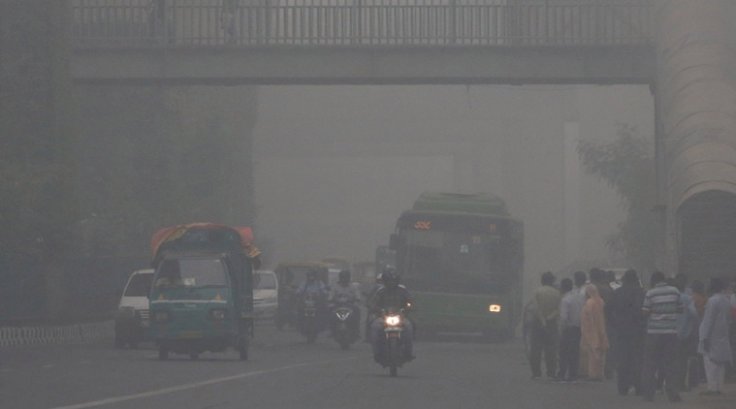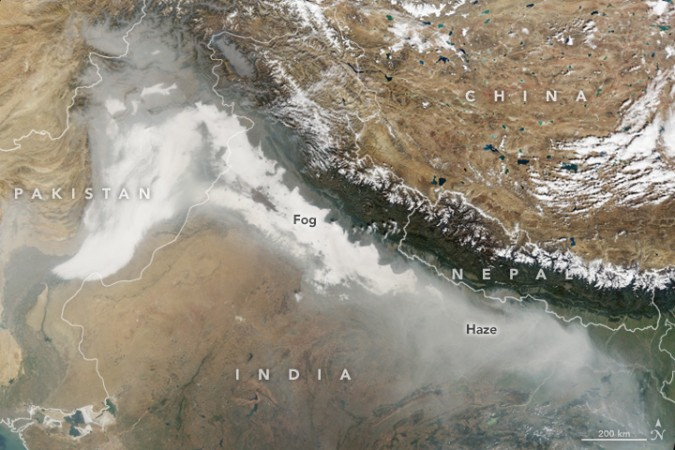
Delhi, engulfed in a think smog is struggling through its worst air pollution levels in the last three years. The Delhi government had declared a public health emergency on November 1 and ordered all schools to remain shut till November 5. However, as per reports, the schools are expected to remain shut till Friday.
With Air Quality Index (AQI) above 500 (severe plus) at various places, the Delhi government has rolled out Odd-Even car rationing scheme, that will be in place from today till November 15. Under the scheme, vehicles with registration numbers ending with an even number will ply on even days and vice-versa. Though public transportation system has been exempted, the scheme will put additional burden on the public road and rail transport system, both of whom have announced that they are ready to tackle the additional traffic. Those disobeying the rules would be fined Rs 4,000 ($56.60).
Along with the public transport systems, various other categories of vehicles have also been exempted, such as two-wheelers, 4-wheelers of VIPs such as President, Vice President; Prime Minister etc, though ministers of the Delhi government will not be exempted. Those who are given a pass includes cars carrying school children in uniform, women drivers and car ride service companies like Ola and Uber who have stated that they won't surge their prices during the 12-days when the scheme is in place.
This is the third edition of the car rationing scheme, the first and second editions implemented in 2016 and 2017, respectively. The contribution of the scheme in tackling air pollution is uncertain, though it improves vehicular congestion considerably. Though vehicular traffic does contribute to pollution levels, the situation gets exacerbated this time of the year due to stubble burning by farmers in neighbouring states of Punjab and Haryana to prepare their fields for the winter crops; and the Hindu festival of Diwali, which involves large-scale burning of crackers.
Delhi's, Air Quality Index (AQI) according to US standards, published by AirVisual, reached 468 on Monday, Nov.4, that puts it in the category of 'Hazardous'. It's at the top spot in terms of air pollution. Delhi's AQI is almost four-times that of Kolkata (India) that comes at a distant second with an AQI of 164.
Impact on health:
The economic impact of stubble burning on economic loss is estimated to be over $30 billion, according to a study by researchers at the International Food Policy Research Institute (IFPRI) linking the crop residue burning (CRB), in vogue mostly in the northern India, as a leading risk factor for acute respiratory infection (ARI) among children. Though India wants to reduce stubble burning by 70 percent in Haryana and Punjab, experts castigated the claim as far-fetched.
"Bringing down crop stubble burning by up to 70 percent seems like a tall order even though there are things happening on the ground," said Sachchida Nand Tripathi, an IIT Kanpur professor, who works with the federal environment ministry on various pollution measures. "It's like a war, and a lot more needs to be done in terms of multi-agency coordination," he told Reuters in 2018 when the issue cropped up.

The air quality index has risen above 300 (100+ is harmful) in parts of Delhi in 2018. Currently, the government is offering to pay for up to 80 percent of certain farm equipment in lieu of not burning stubble, while the Central Pollution Control Board has brought in stricter regulations, with little improvement.
In view of the worsening situation, using NASA satellite data on fire activity, the team analyzed health data from more than 2.5 lakh individuals living in rural and urban areas of India and compared those from CRB areas with non-CRB areas to find the variation in respiratory health. They also examined other triggers such as firecracker burning during Diwali and daily motor vehicle density.
Economic Loss
The estimate shows that economic losses due to air pollution from firecrackers are estimated to be around $7 billion. In five years, the economic loss due to burning of crop residue and firecrackers is estimated to be $190 billion, or nearly 1.7 per cent of India's GDP. The study was published in the International Journal of Epidemiology.








